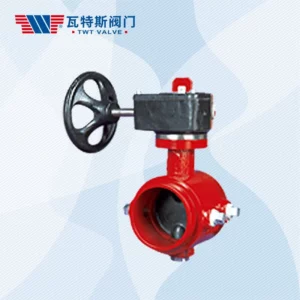Selecting the right ductile iron wafer butterfly valve for your application involves considering several factors.
Here are some important factors to consider:
Size: The size of the valve should be appropriate for the size of the pipeline in which it will be installed. The valve size should match the size of the flange that it will be installed between.
Pressure rating: The valve should have a pressure rating that is appropriate for the maximum pressure that it will be exposed to in the pipeline. The pressure rating should be higher than the maximum pressure to ensure that the valve can operate safely and reliably.
Temperature rating: The valve should have a temperature rating that is appropriate for the maximum temperature that it will be exposed to in the pipeline. The temperature rating should be higher than the maximum temperature to ensure that the valve can operate safely and reliably.
Disc material: The disc material of the valve should be appropriate for the fluid that will be flowing through the pipeline. For example, if the fluid is corrosive, the disc should be made of a corrosion-resistant material.
Seat material: The seat material of the valve should be appropriate for the fluid that will be flowing through the pipeline. For example, if the fluid is abrasive, the seat should be made of a wear-resistant material.
End connections: The valve should have the appropriate end connections for the pipeline in which it will be installed. For example, if the pipeline has flanged connections, the valve should have wafer flange end connections.
Actuation method: The valve should be compatible with the desired actuation method, ductile iron wafer butterfly valve such as manual, pneumatic, or electric actuation.
Overall, selecting the right ductile iron wafer butterfly valve for your application requires careful consideration of several factors. It’s important to work with a qualified engineer or technician to ensure that the valve meets the requirements of your application and is installed correctly.
What are some common actuation methods for ductile iron wafer butterfly valves?
There are several common actuation methods for ductile iron wafer butterfly valves, including:
Manual: Manual actuation involves turning a handwheel or lever to open or close the valve. Manual actuation is simple and reliable, but it can be time-consuming and labor-intensive, especially for large valves or frequent operation.
Pneumatic: Pneumatic actuation involves using compressed air to open or close the valve. Pneumatic actuators are fast and reliable, and they can be used for remote operation. However, they require a source of compressed air, which can be expensive to install and maintain.
Electric: Electric actuation involves using an electric motor to open or close the valve. Electric actuators are fast, reliable, and can be used for remote operation. They can also be equipped with feedback sensors for position control. However, they require a source of electricity and can be expensive to install and maintain.
Hydraulic: Hydraulic actuation involves using hydraulic fluid to open or close the valve. Hydraulic actuators are fast and powerful, and they can be used for remote operation. However, they require a source of hydraulic fluid, which can be expensive to install and maintain.
The choice of actuation method depends on several factors, including the size and type of valve, the frequency of operation, and the availability of utilities such as compressed air or electricity. It’s important to choose the appropriate actuation method to ensure that the valve operates reliably and efficiently in your specific application.
